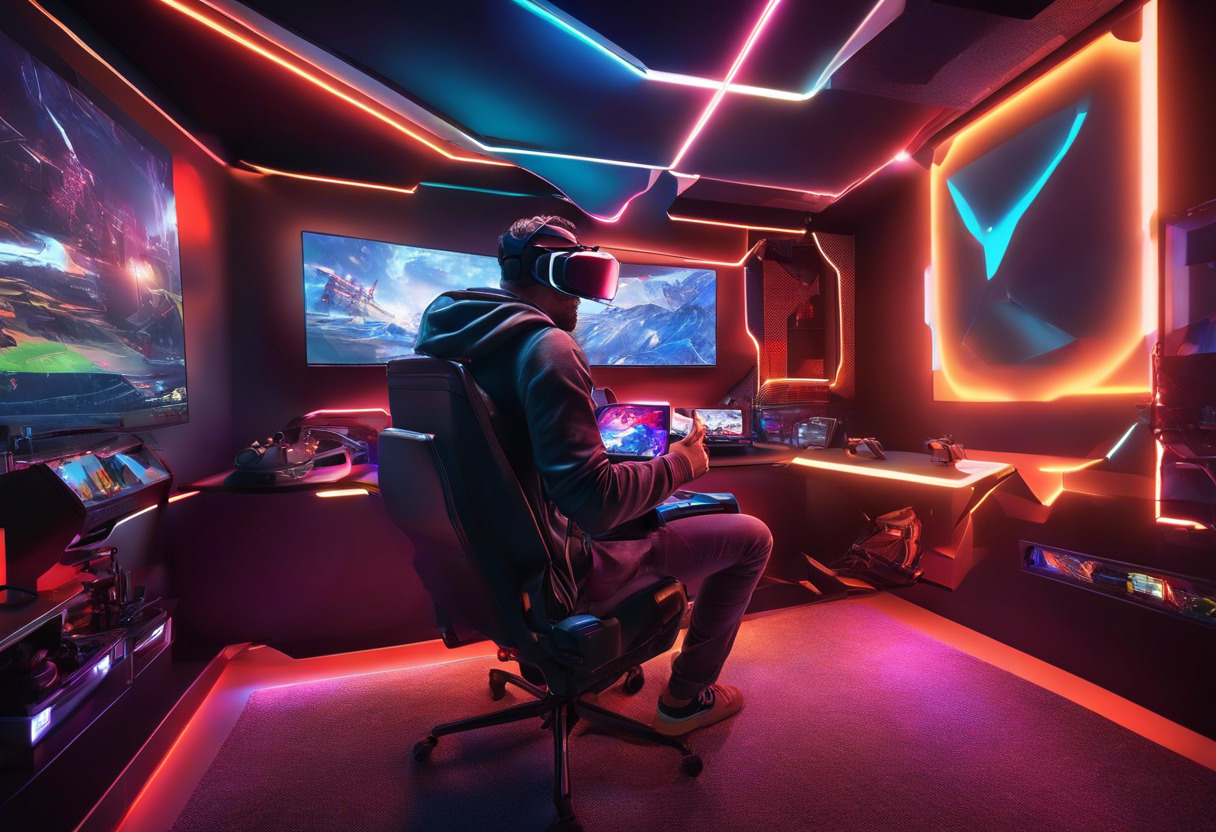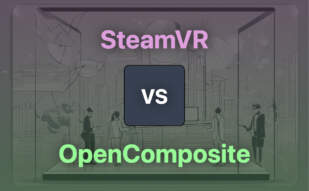For broad compatibility and easy setup, choose Windows Mixed Reality. It delivers broad-range VR experiences with holographic elements and supports older PCs. However, power users seeking a robust 360-degree VR journey should lean towards SteamVR, alongside its microtransaction API and additional functionality overlays.

Key Differences Between Windows Mixed Reality and SteamVR
- Windows Mixed Reality delivers easy-setup VR experience with broad range of older PCs and laptops, while SteamVR requires higher system requirements for a comprehensive VR experience.
- MR tracks real-world objects and environments within VR scenes, SteamVR provides a distinct 360-degree room VR experience.
- Various front-mounted MR headsets available (Acer, HP, Asus, etc.), SteamVR predominately partners with HTC (Vive).
- Windows Mixed Reality adds holographic elements to VR, SteamVR enables in-app purchases and overlay applications.
| Comparison | Mixed Reality (MR) | SteamVR |
|---|---|---|
| Concept Introduction | 1994 by Paul Milgram and Fumio Kishino | 1986 with VCASS, Term “Virtual Reality” popularised in 1987 |
| Mainstream Usage | Consumer and business applications | Gaming and corporate settings |
| Experience | Holographic representations, 3D models in real world. | 360-degree full room VR experience, creates 3D environments |
| Hardware | Holographic and Immersive VR devices | HTC Vive, supports other HMDs like Oculus Rift |
| Tracking and Sensing | Front-mounted cameras in the headset, hand-recognition | Positional tracking supported by base stations, SteamVR Controllers |
| Software support | Windows Mixed Reality compatible with many laptops and PCs | Steam client with firmware update, audio settings customisation |
| Additional Features | Spatial sound, voice and speech input | In-app purchases, overlay applications for additional functionality |
| Interactions | Interacts with data in living spaces, friends, and social media | Allows launching apps, connect with friends in different environments |
What Is Mixed Reality (MR) and Who’s It For?
Mixed Reality (MR) is a blend of physical and digital realities, unlocking immersive 3D interactions within both personal and professional environments. This technology follows mainframes, PCs, smartphones as a new computing direction.
MR, with holographic people and 3D models, is for consumers, businesses, and creators seeking versatile experiences. Microsoft’s Mixed Reality targets a wide audience with normal laptops and older PCs compatibility, aiming for easier access and less setup-required VR experiences.

Pros of Mixed Reality
- Transcends traditional screen-bound interface
- Empowers new level of user experiences
- Compatible with a variety of devices (e.g., Acer, HP, Asus, Dell, Lenovo, Samsung)
- Inside-out tracking technology for wider VR range
Cons of Mixed Reality
- May require some technical knowledge for setup
- Potential compatibility issues with non-Windows devices
What Is SteamVR and Who’s It For?
SteamVR is a runtime within the Steam client enabling full-room VR experience. It effortlessly installs upon VR headset connection to a PC. Key features include defining play area, managing device firmware, pairing new devices and configuring audio settings.
Offering compatibility with its own and other VR headsets (like Vive and Rift), SteamVR is for gaming enthusiasts and professional developers who use VR technology for creating immersive 3D environments.

Pros of SteamVR
- Offers a comprehensive 360-degree full room VR experience
- Supports creation of overlay applications for additional functionalities
- Compatible with multiple VR headsets, including Vive and Rift
Cons of SteamVR
- System compatibility issues reported with Meta Quest 3
- Requires specific system requirements for operation
- May need additional accessories for comprehensive experience
Deciding VR Titans: Windows Mixed Reality or SteamVR?
In the VR battleground, Windows Mixed Reality and SteamVR rise as notable contenders, each offering unique features and user experiences. But which emerges as victor?
For the Everyday User
Windows Mixed Reality (WMR) wins hands down for users seeking accessibility and convenience. With compatibility across many standard laptops and older PCs, WMR taps into a broad user base. Its self-tracking headsets require less setup, making the dipping into VR a breeze.

The Gaming Enthusiast
SteamVR impresses with its focus on an immersive, room-scale VR experience. For the gaming enthusiasts craving sensory-rich ventures, SteamVR’s overlay applications and 3D environment creation tools allows personalized playgrounds. Plus, multiple headset compatibility is key.

Developers and Tech Creators
The edge leans towards Windows Mixed Reality for developers and tech creators. The wide variety of MR experiences, supported by advancements in computer vision, processing power, and sensor technology, opens many doors for creative innovation. Moreover, collaboration on 3D assets is a game-changer.

In the uproar of VR supremacy, for the average user and tech creators, Windows Mixed Reality offers easier accessibility and richer development tools. However, for the game enthusiast, SteamVR captures the crown with immersive room-scale VR experiences.
Patrick Daugherty
Content writer @ Aircada. Merging AR expertise with a love for late-night gaming sessions.





